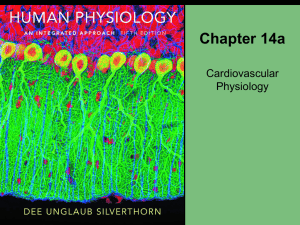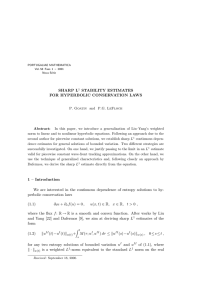Supplementary Figures (docx 26K)
advertisement
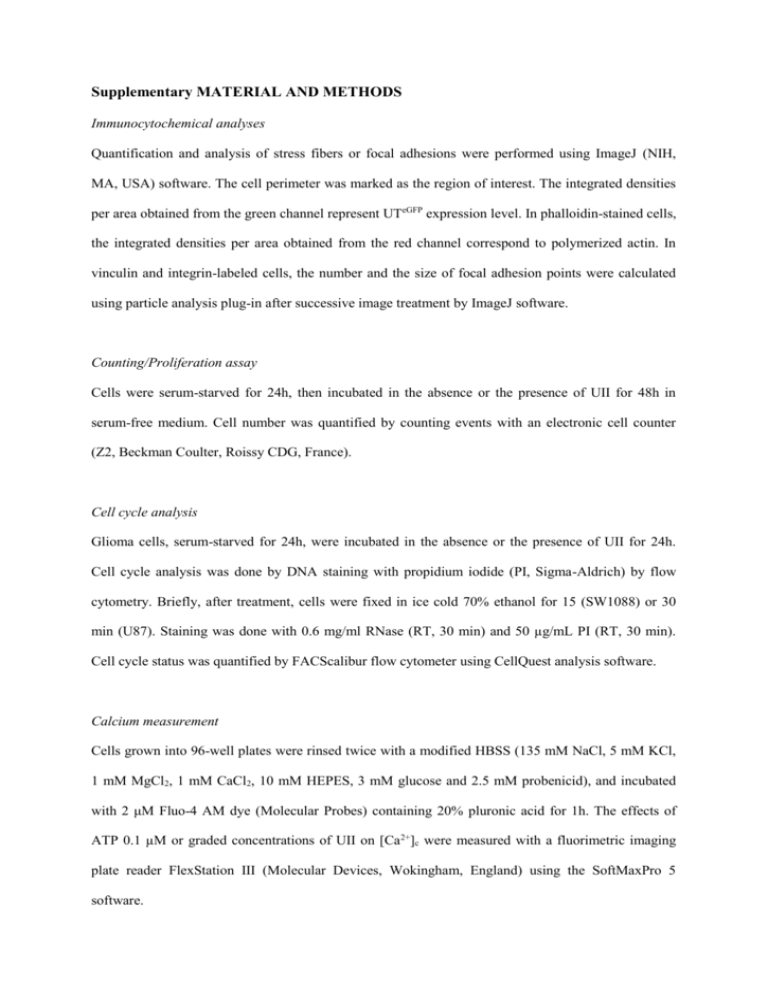
Supplementary MATERIAL AND METHODS Immunocytochemical analyses Quantification and analysis of stress fibers or focal adhesions were performed using ImageJ (NIH, MA, USA) software. The cell perimeter was marked as the region of interest. The integrated densities per area obtained from the green channel represent UTeGFP expression level. In phalloidin-stained cells, the integrated densities per area obtained from the red channel correspond to polymerized actin. In vinculin and integrin-labeled cells, the number and the size of focal adhesion points were calculated using particle analysis plug-in after successive image treatment by ImageJ software. Counting/Proliferation assay Cells were serum-starved for 24h, then incubated in the absence or the presence of UII for 48h in serum-free medium. Cell number was quantified by counting events with an electronic cell counter (Z2, Beckman Coulter, Roissy CDG, France). Cell cycle analysis Glioma cells, serum-starved for 24h, were incubated in the absence or the presence of UII for 24h. Cell cycle analysis was done by DNA staining with propidium iodide (PI, Sigma-Aldrich) by flow cytometry. Briefly, after treatment, cells were fixed in ice cold 70% ethanol for 15 (SW1088) or 30 min (U87). Staining was done with 0.6 mg/ml RNase (RT, 30 min) and 50 µg/mL PI (RT, 30 min). Cell cycle status was quantified by FACScalibur flow cytometer using CellQuest analysis software. Calcium measurement Cells grown into 96-well plates were rinsed twice with a modified HBSS (135 mM NaCl, 5 mM KCl, 1 mM MgCl2, 1 mM CaCl2, 10 mM HEPES, 3 mM glucose and 2.5 mM probenicid), and incubated with 2 μM Fluo-4 AM dye (Molecular Probes) containing 20% pluronic acid for 1h. The effects of ATP 0.1 µM or graded concentrations of UII on [Ca2+]c were measured with a fluorimetric imaging plate reader FlexStation III (Molecular Devices, Wokingham, England) using the SoftMaxPro 5 software. For Ca2+ microfluorimetry on fresh glioma explants, intracellular Ca2+ was measured (fluorescence at 510 nm following excitation at 340/380 nm from a 300 W xenon lamp) from a single visual field using an integrating CCD (charge-coupled device) camera coupled to a Leica DMLFSA microscope. Cell Ca2+ imaging and fluorescence quantification were carried out using the Metafluor Imaging System (Molecular Devices). Wound healing assay U87 cells (500,000/well) were plated in a fibronectin-coated 12-well plate. After seeding, cell monolayer was scratched with a tip, and UII was added. Microphotographies of the wound were taken at 0h and 16h by using 4X objective of a microscope (Nikon Eclipse TS 1000). cAMP/IP-1 metabolism The determination of the inositol phosphate 1 (IP1) accumulation in HEK293 cells was performed in 96-wells microplates using the IP-One HTRF® assay (Cisbio Bioassays, Codolet, France) according to the manufacturer’s protocol. Time-resolved fluorescence resonance energy transfer (FRET) signals were measured 50 μs after excitation at 620 and 665 nm using a RubyStar instrument (BMG labtech, Champigny-sur-Marne, France). Cell-based ELISA Cells (50,000/well) were plated in poly-ornithine-coated 96-well plates. After fixation with PFA (4%, 5 min, RT), cells were permeabilized in 0.05% Triton X-100 and non specific binding sites were blocked with FBS (1%, 30 min, RT). Cells were incubated with anti-c-myc antibody (0.5 µg/ml, Santa-Cruz) 1h at RT, then with HRP-conjugated secondary antibodies (1/1000, Santa-Cruz) for 30 min at RT. After washes, a colorimetric alkaline phosphatase substrate was added (SuperSignal ELISA, Fisher Scientific) and the resulting color reaction was measured using a luminometer (Fisher Scientific). Phosphospecific cell-based ELISA was performed as previously described with minor modifications (Versteeg et al. 2000). Primary antibodies directed against ERK and p-ERK (Santa Cruz), or AKT and p-AKT (Upstate) were used at 0.5µg/mL each. Luminescence was measured using a luminometer (Fisher Scientific) after addition of a colorimetric alkaline phosphatase substrate (SuperSignal ELISA, Fisher Scientific). Cloning ring assay HEK293 cells were plated in a cloning ring 6 mm diameter (50,000/ring). After seeding, the ring was removed, cells were rinsed with fresh serum-free medium and UII was added. Microphotographies of the cell ring were taken at 0h, 24h and 48h by using a Macroscope Leica (Z6 APO) and the cell disc expansion was quantified by subtracting the area corresponding to the initial cellular edge at 0h from that of the edge of the cell disc after 24h or 48h treatment by using ImageJ software. Supplementary Legends to figures Figure S1. Clinicopathologic features of the studied glioblastoma. GBM, glioblastoma multiform; M, male; WHO, World Health Organization. NA, not analyzable because of large necrotic areas. Figure S2. Validation of the antibody directed against human UT in HEK cells. Left, Western blot analysis of UTcmyc expression using the anti-UT antibody used in Figure 1D in HEK transfected with c-myc or transfected with human recombinant UTc-myc (UT). A Specific band and a higher molecular mass doublet of bands likely corresponding to human UT appeared at ≈42 and around 65 kDa (black arrows). Co-transfection of HEK-UTcmyc with shRNA directed against UT mRNA (shRNA UT) showed a slight diminution of UT expression at ≈ 45 kDa, not observed after transfection with a control shRNA (shRNA Ctrl). Right, Expression of UTc-myc in whole cells (permeabilized) or only at the cell plasma membrane (nonpermeabilized) using anti-UT antibody and revealed by ELISA assay. Figure S3. Effect of UII on glioma cell proliferation, cell cycle and chemotaxic migration. (a) SW1088, U87 and HEK-UT were incubated for 48h in the absence or the presence of UII (10-8 and 10-10 M) or FBS and counted using a Coulter counter. UII did not modify cell growth whereas FBS exhibited drastic stimulation of cell proliferation/survival. Data are mean SEM from one representative experiment in quadruplicate of 4 independent experiments. Mann and Whitney test, *, P<0.05; compared with the corresponding control (in the absence of treatment). (b) Representative example of the UII (10-7 M) effect on SW1088 and U87 cell cycles after a 24h-treatment. Cell cycle analysis following propidium iodide intercalation into the cellular chromatin was performed by flow cytometry. Data are represented as relative fluorescence intensity of G1, S and G2/M-phase population in a 2dimensional cytometry profile in the absence (control) or the presence of UII. Percentage cells in each phase are indicated. (c) SW1088 (left) and U87 (right) were exposed in the Boyden chamber to increasing concentrations of UII (10-13-10-7 M) for 24h and cells were counted as described above. Bar graph represent mean SEM obtained from 3 independent experiments in triplicates (SW1088) or from a representative experiment in triplicates (U87). One way analysis of variance followed by a Bonferroni post-test, *, P<0.05; **; P<0.01, ***<0.001. (d) Wound healing assay showing in vitro directional migration of U87 after a scratch of a confluent cell layer in the absence (FBS-) or the presence of FBS (FBS+) and UII (10-10 and 10-8 M). Photographs were taken at 0h and 16h after scratch injury and showed that UII (10-10 and 10-8 M) enhanced the covered surface compared to control (FBS-). Figure S4. Glioma cells do not exhibit the classical UT/Ca2+ coupling. (a) Left, concentration-response curve for UII (10-12-10-7 M)-mediated [Ca2+]c mobilization in HEKtransfected with cDNA encoding c-myc (HEK) or UTc-myc (HEK-UT). Ca2+ response was recorded from cells previously loaded with Fura2-AM, and ATP (10-4 M) was used as a positive control. Middle, panel shows the quantification of the maximum Ca2+ response detected at 10-7 M (UII) and 10-4 M (ATP) normalized to control (buffer injection). Right, concentration-response curve for UII-mediated IP1 production (normalized to the maximum effect of UII (10-5 M). (b) Left, concentration-response curve for UII (10-12-10-7 M)-mediated [Ca2+]c mobilization in glioma SW1088 and U87 cells transfected with cDNA encoding cmyc (SW1088 and U87) or UTc-myc (SW1088-UT and U87-UT). Right, quantification of the maximum effect of UII (10-7 M) and ATP (10-4 M) on [Ca2+]c mobilization in glioma cells. (a and b) Data are mean SEM from 2 experiments in triplicates. Statistical significance was determined by a Kruskal-Wallis test followed by a Dunn's Multiple Comparison Test. *, P<0.05; **, P<0.01; ***, P<0.001 compared with control. (c) Left, Pseudocolor images illustrating time-dependent increase in [Ca2+]c in a representative experiment on a human glioblastoma explant (72h of culture) following exposure to UII (10-7 M). (a) glioma cells under resting conditions in a single visual field (bar correlates pseudocolor with relative [Ca2+]c levels). (b) a subset of glioma cells non responding upon addition of UII (10-8 M, 150 s). (c) ATP (10-4 M, 40 s)-inducing a rapid (c) and reversible (d) [Ca2+]c increase in the same glioblastoma explant. Right, composite of [Ca2+]c mobilization responses in 16 individual cells from the microscopic field in the left. All cells failed to respond to UII and exhibited a marked Ca2+ rise after addition of ATP. Scale bar, 50 µm. Figure S5. Control experiments on UTERY(AAA) mutant, coupling to Go and G12 proteins in HEK cells. (a) Western blot analysis showing expression of UTc-myc (HEK-UT) and the UTERY(AAA)c-myc mutant (HEK- UTERY(AAA)) revealed with an anti-c-myc after 48h transient transfection. A triplet band was detected for UT and UTERY(AAA) at ≈40, 45 and 47 kDa and also a thin band around 65 kDa, compared with HEK. (b) Expression of UTc-myc and UTERY(AAA)c-myc mutant expressed as receptors in whole cells (permeabilized) or only at the cell plasma membrane (non-permeabilized) using anti-c-myc antibody and revealed by ELISA assay. The UTERY(AAA) mutant was significantly expressed at the plasma membrane and showed similar expression than UT. Bar graph represents mean SEM from 2 experiments in sextuplet. Statistical significance was determined by a Mann and Whitney test, **, P<0.01; ***, P<0.001. (c) HEK were transiently transfected with cDNA encoded pCMVcmyc , UTc-myc or UTERY(AAA)c-myc and incubated with the Ca2+ fluorescent probe Fluo 4. Application of UII (10-7 M) induced a maximum amplitude of [Ca2+]c transients expressed as percentage of the corresponding control values in the absence of UII. Data are mean SEM from a representative experiment in triplicate. (d) Assessment of BRET between Gαo and Gβγ or UT and Gα12 in HEK co-expressing αo-Rluc and βγ-eYFP or UT-RlucII and α12-eGFP2 in the presence of increasing concentrations of UII (10-11 to 10-6 M). Figure S6. Urotensin II effect on ERK1/2 and AKT phosphorylation in HEK-UT and glioma cells. Determination of both total and phosporylated (activated) forms of ERK1/2 (a, c, e) and AKT (b, d, f) on HEK expressing UT (HEK-UT, a and b), SW1088 (c and d) and U87 (e and f) in the absence (control) or the presence of UII from 0.5 to 30 min. FBS and/or EGF were used as positive controls whereas an inhibitor of MAPK (PD98059) was used as a negative control for ERK1/2 activation. ELISA assay was performed with specific antibodies directed against total and phosphoforms of ERK1/2 and AKT, respectively, as described in Materials and Methods. Bar graph represents mean SEM from 2 to 3 experiments in triplicates. For time course, statistical significance was determined by a Kruskal-Wallis test followed by a Dunn's Multiple comparison Test. *, P<0.05; **, P<0.01; ***, P<0.001 compared with control. For positive or negative controls, statistical significance was determined by a Mann and Whitney comparison Test. *, P<0.05; **, P<0.01; ***, P<0.001 compared with control. Figure S7 Inhibition of HEK-UT cell motility in the cloning ring assay. (a) Monolayer disc of HEK transfected with cDNA encoding UT were formed in cloning ring during 24h in fibronectin, and then were incubated in the absence (control) or the presence of UII (10-14 to 10-6 M) during 48h. Top panel indicates a representative phase contrast photography of spheroid morphology at 0 (small dotted white line) and 48h (large dotted white line). The bottom panel represents the quantification of monolayer disc outgrown corresponding to the disc surface area measured at 48h normalized to its area at T0. Administration of UII drastically blocked cell expansion. (b) Top panel, photographs of monolayer disc of HEK expression UTeYFP (green cells) acquired from time-lapse microscopy over a 14h-imaging period. Bottom panel, motility of border cells non expressing (UT-) or expressing (UT+) UT, in the absence (control) or the presence of UII (10-8 M) during 8h. It can be noticed that UTpositive cells covered less distance even in the absence of UII than UT negative cells.
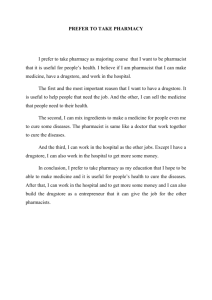
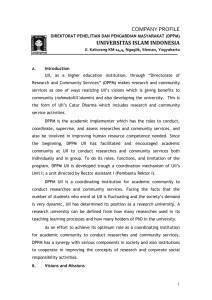
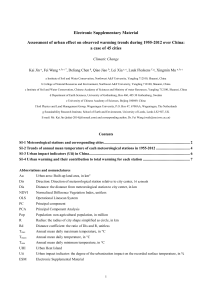
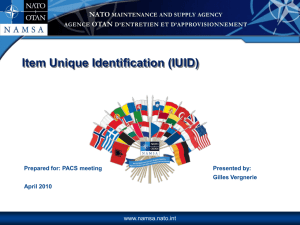
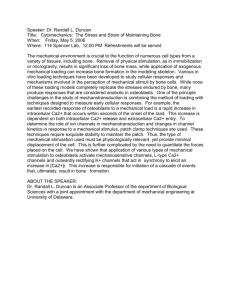
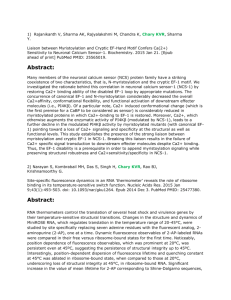
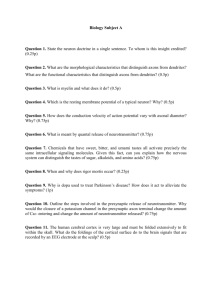
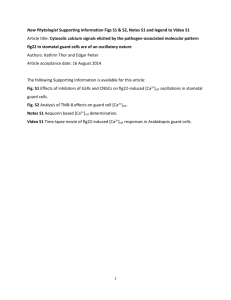
![Substantiation of the Rhod-2 as indicator of cytosolic [Ca2+] Rhod](http://s3.studylib.net/store/data/006893824_1-225923ad9f8cdb438dcdcf307ccbe9bd-300x300.png)
